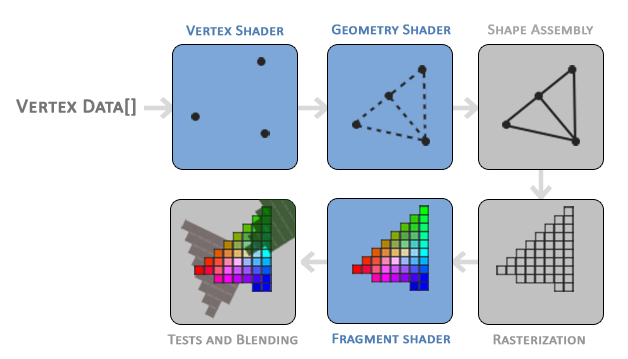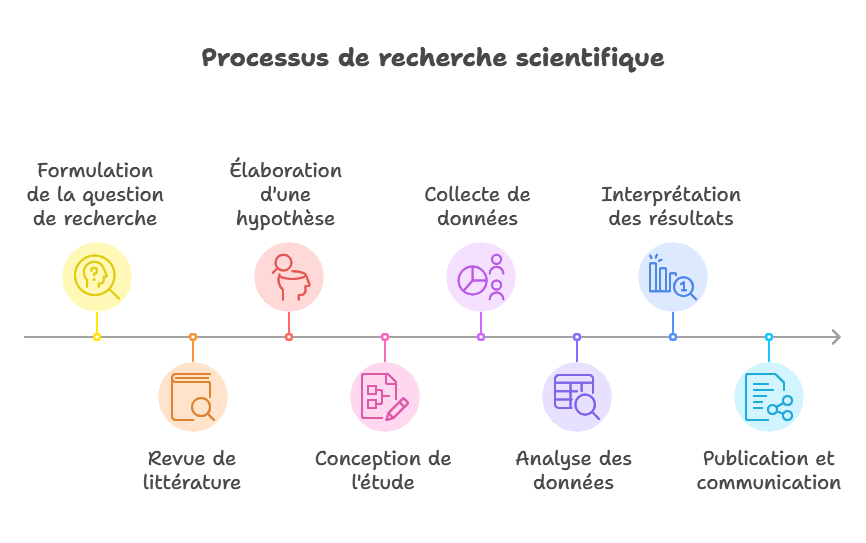nLa partie concernant les entités intelligentes a pour but de fournir aux étudiants les notions pour concevoir des animations avec des objets complexes et des personnages, pilotées ou autonomes. Elle doit permettre de connaître les différents algorithmes et techniques en animation et en simulation comportementale.
- Créateur de cours: Foudil Cherif

This course provides an overview of shaders and their role in modern graphics processor (GPU) programming. Shaders are specialized programs that run on the GPU, enabling real-time rendering of complex visual effects, lighting and textures. This introduction covers the basics of shader languages (e.g. GLSL, HLSL), the graphics pipeline and key concepts such as vertex, fragment and compute shaders. It also explores how GPUs exploit parallel processing to achieve high-performance rendering. Finally, the course covers advanced concepts such as Post-Processing Effects, Geometry Shaders & Tessellation and deferred rendering.
- Créateur de cours: Mebarek Boucetta
- Créateur de cours: abdelhak merizig
- Créateur de cours: Babahenini Mohamed Chaouki

- La méthodologie de recherche scientifique est un processus structuré et rigoureux visant à produire des connaissances fiables et valides.
- Elle commence par la définition du problème de recherche et la formulation d'objectifs clairs, suivie de la conception de la recherche, où l'on choisit une approche quantitative, qualitative ou mixte. La collecte des données s'effectue via des méthodes adaptées (expérimentation, enquêtes, entretiens, etc.), puis les données sont analysées à l'aide de techniques statistiques ou qualitatives. Les résultats sont interprétés en les reliant aux objectifs de recherche et à la littérature existante, avant d'être communiqués sous forme d'articles, thèses ou présentations.
- La validation des résultats (reproductibilité, évaluation par les pairs) et le respect des normes éthiques (consentement, confidentialité) sont essentiels pour garantir la crédibilité de la recherche. Enfin, le processus inclut une amélioration continue basée sur les retours et les nouvelles découvertes, permettant d'affiner les méthodes et de planifier des recherches futures.
- Ce cours présente ensuite La rédaction et le suivi de publication d'un article scientifique impliquent plusieurs étapes clés pour partager les résultats de recherche avec la communauté académique. Cela commence par la préparation de l'article, en choisissant une revue adaptée, en passant par la rédaction, la soumission , le processus de peer review, les révisions et enfin la publication finale.
- Créateur de cours: Samir Bourekkache
- Créateur de cours: abdelhak merizig
- Créateur de cours: Babahenini Mohamed Chaouki
- Créateur de cours: Siham Sahli
- The objective of this module is to compare the performance of algorithms that make the same tasks to find a good algorithm. The content of the module is dedicated on the one hand, to the theory of the algorithms complexity, problems complexity, growth of functions and performance measurement. And on the other hand, to the presentation of the different combinatorial optimization methods.
- Achieving this objective requires basic knowledge relating to the field of algorithmic analysis and complexity optimization techniques presented by: methods for calculating the complexity of algorithms -uniform cost and logarithmic cost- and the problem complexity classes, optimization , dichotomy and D&C strategy.
- The content of this module allows you to present the notion of combinatorial optimization, the exact methods: Branch & Bound algorithm as well as approximate methods for solving an optimization problem, and in particular, the study of specialized heuristics: Greedy Algorithm, exploration methods with information: LS, A* and Hill Climbing Algorithms .
- And the study of metaheuristic techniques : TS, SA and GA.
- Créateur de cours: Sihem Slatnia